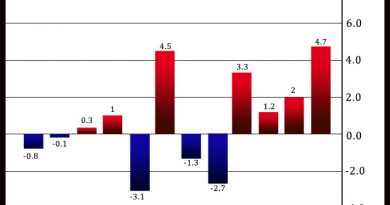UK Inflation Hits 17-Month Low On Energy Prices
UK consumer price inflation hit a 17-month low in July on easing energy prices but core inflation stayed unchanged and services cost inflation accelerated, strengthening the case for another interest rate hike in September.
Consumer price inflation slowed to 6.8 percent in July, as expected, from 7.9 percent in June, the Office for National Statistics reported Wednesday. This was the weakest since February 2022, when inflation was 6.2 percent.
Falling gas and electricity prices provided the largest downward contributions to the annual rate. Meanwhile, hotels and air travel were the classes that provided the largest offsetting upward contributions to the change.
Food and non-alcoholic beverage prices registered an annual increase of 14.9 percent but this was the slowest rate since September 2022. The annual rate for transport was negative for the second straight month.
On a monthly basis, consumer prices dropped 0.4 percent, in contrast to the 0.1 percent rise in June. Economists expect consumer prices to fall 0.5 percent.
Meanwhile, core inflation remained elevated and service price inflation accelerated further in July.
Excluding prices of energy, food, alcoholic beverages and tobacco, core inflation held steady at 6.9 percent in July, while the rate was forecast to slow to 6.8 percent.
Moreover, services price inflation rose to 7.4 percent from 7.2 percent in June. This was the highest since the 9.5 percent registered in March 1992.
As wage growth and services inflation both remained stronger than the Bank of England had estimated, the bank has more work to do, Capital Economics’ economist Ruth Gregory said. The economist expects the BoE to raise rates further, by another 25 basis points in September.
The central bank has increased its benchmark rate over the last 14 consecutive sessions. At 5.25 percent, the bank rate is currently the highest since early 2008.
Another data from the ONS showed that input prices posted the lowest annual rate since May 2020 largely driven by the downward contribution from crude oil prices. Input prices fell 3.3 percent after a 2.9 percent decrease in the previous month.
Month-on-month, input prices slid 0.4 percent, which was slower than the 1.3 percent decline registered in June. The monthly rate has been negative for seven of the past nine months.
At the same time, output prices declined for the first time since December 2020. Factory gate prices slid 0.8 percent, offsetting June’s 0.3 percent increase. Output prices gained 0.1 percent, following a 0.2 percent fall in June, data showed.
Source: Read Full Article



